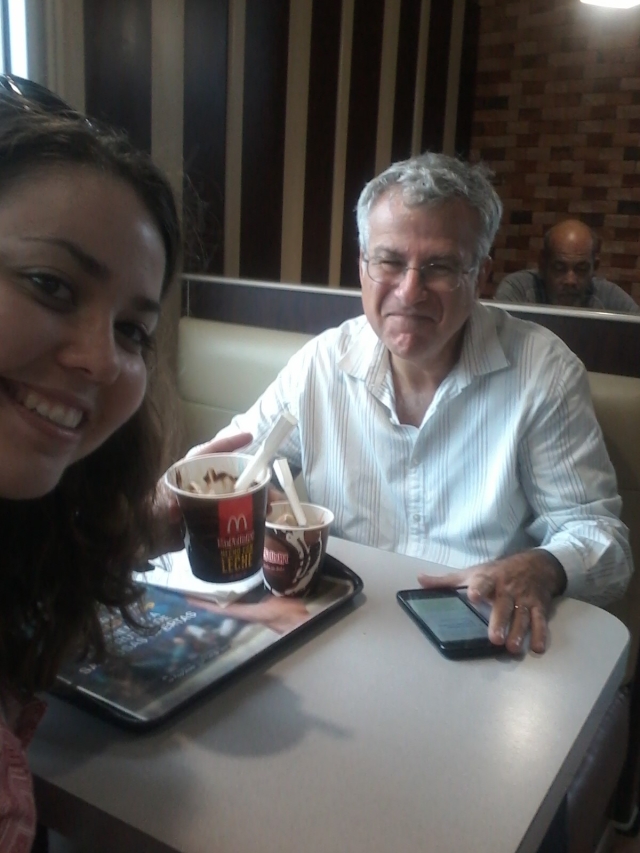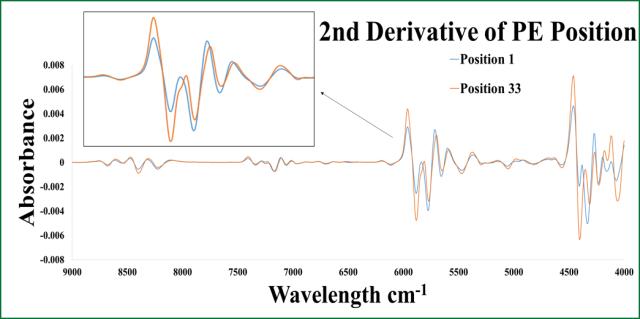A wise man told me that variation implies information…
Enviado por Taylor Dawn Graham el
I have had the pleasure of working with Professor Rodolfo Romañach at the University of Puerto Rico Mayaguez. I have learned many things from him and those who work in his lab.
His favorite explanation of this research is that variation implies information. Professor Romañach told me that if I left the house when my mom was happy and I came back and she was mad, there is important information to be learned from the variation of her mood.
If I know that the variation of her mood was from leaving my room messy, then in the future I can keep my room clean and keep my mom happy. This research looked for variation in NIR spectroscopy so that we can find ways to address them.
This post is to communicate with the public of what we did this summer and why it is important. Please note that bullet points are used for explanations and numbers are used to order the events of what we did.
Research Question:Will the position of an analyte affect NIR spectroscopy results?
Importance:
- Near infrared (NIR) spectroscopy is a non-destructive method used in monitoring and controlling pharmaceutical manufacturing. The wide adoption of NIR spectroscopy requires the development of tutorials and training exercises.
- An eight-week training exercise and a research question were combined in this project with a focus on NIR spectroscopy and soft matter.
- Soft matter is defined as material easily deformed from external force. Examples include plastic bags, sand, and Jell-O. This research used two different polymer sheet protectors as the analyte and matrix of a tablet because they are inexpensive and easily accessible
- Non-destructive methods are important to use because destructive methods will destroy the physical properties that defines soft matter.
- This project showed the challenge of non-destructive analysis of soft matter. Future research can now address this exposed challenge.
Procedure and Conclusions:
1. A total of 33 polyethylene (PE) polymer films were stacked and analyzed with NIR spectra. This was also done with 33 polypropylene (PP) films and then both were compared to find the differences in the spectra.
2. One PE film was placed in position one at the bottom of a stack of 32 PP films. The radiation from the NIR hits the PE first and then goes through the rest of the 32 PP films. This was repeated with the one PE film placed in position 33 on top of the 32 PP films.
- The spectra where the PE film was in position one, and the spectra where it was in position 33, had differences even though both spectra collected had a total of one PE film and 32 PP films. This indicated that position of the one film will change the NIR results.
- Applying this to the pharmaceutical industry means that there is a challenge of getting accurate NIR results. If the position of a drug in a pill is closer to the NIR radiation it will overestimate the drug concentration. If it is father from the NIR radiation the concentration will be underestimated.
- To further study this challenge calibration models and validation sets were made. Calibration models are used to show lots of variation and possible outcomes. Validation sets are used to determine the accuracy of a calibration models.
3. Two calibration sets were made with randomly placing one PE film within a stack of 32 PP films and taking NIR spectra. This was repeated with two PE films within 31 PP films, three PE films within 30 PP films, four PE within 29 PP films, and five PE films within 28 PP films.
4. Two validation sets were made with placing one PE film within a stack of 32 PP films in an odd position. NIR spectra were taken where the PE film was in positions (1, 3, 5…33).
5. Software called Unscrambler was used to study variation in NIR spectroscopy results. Principal component analysis (PCA) was used to qualitatively study sources of variation in NIR spectra. Partial Least Square (PLS) was used to quantify the number of polyethylene films.
- The position of the polyethylene film affected the NIR spectrum. The accuracy of PLS prediction models depended on the film position. Future research can now address this challenge in non-destructive analysis of soft matter.











1 Comentario
Thank you
Enviado por Taylor Dawn Graham el
Thank you